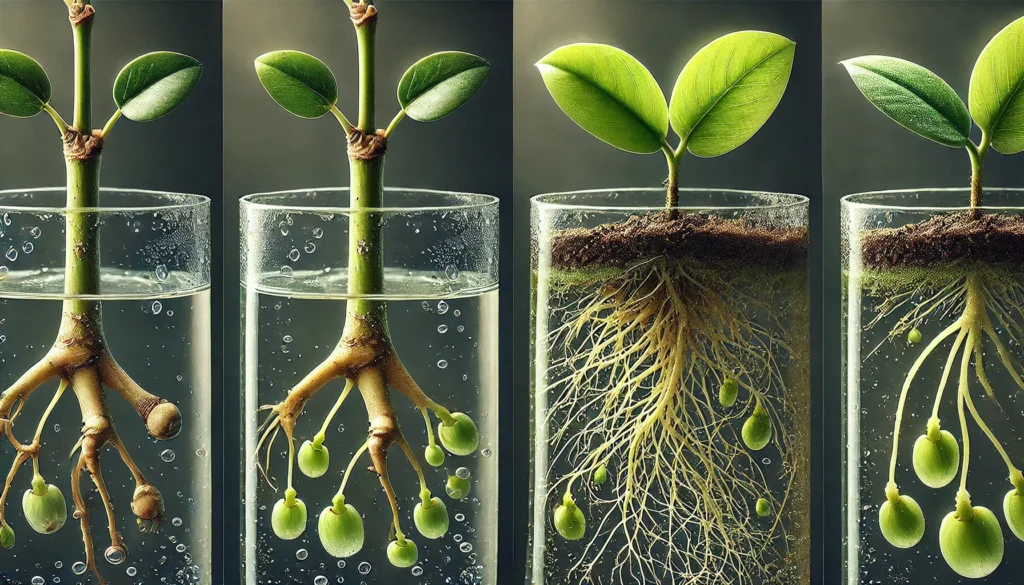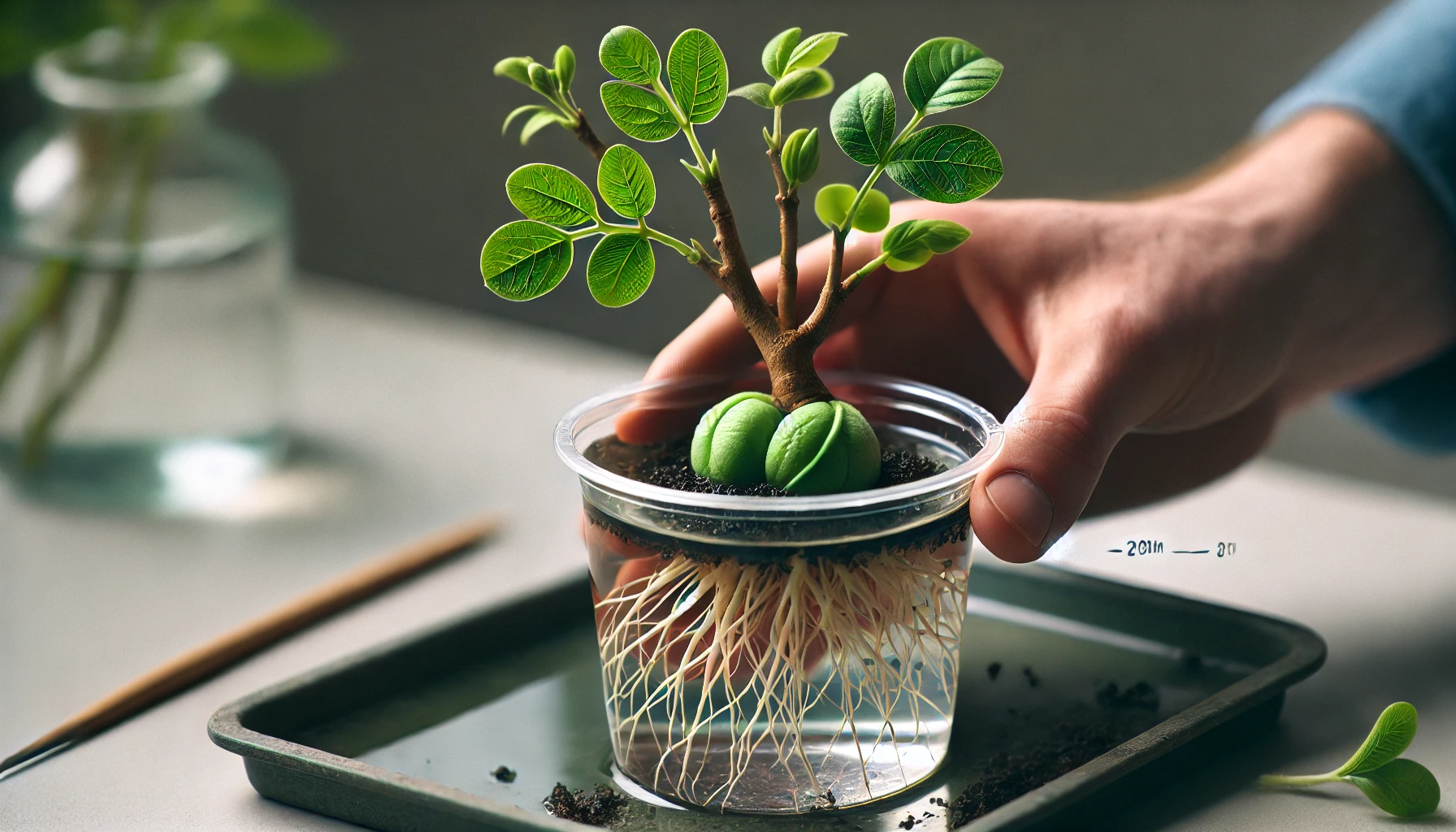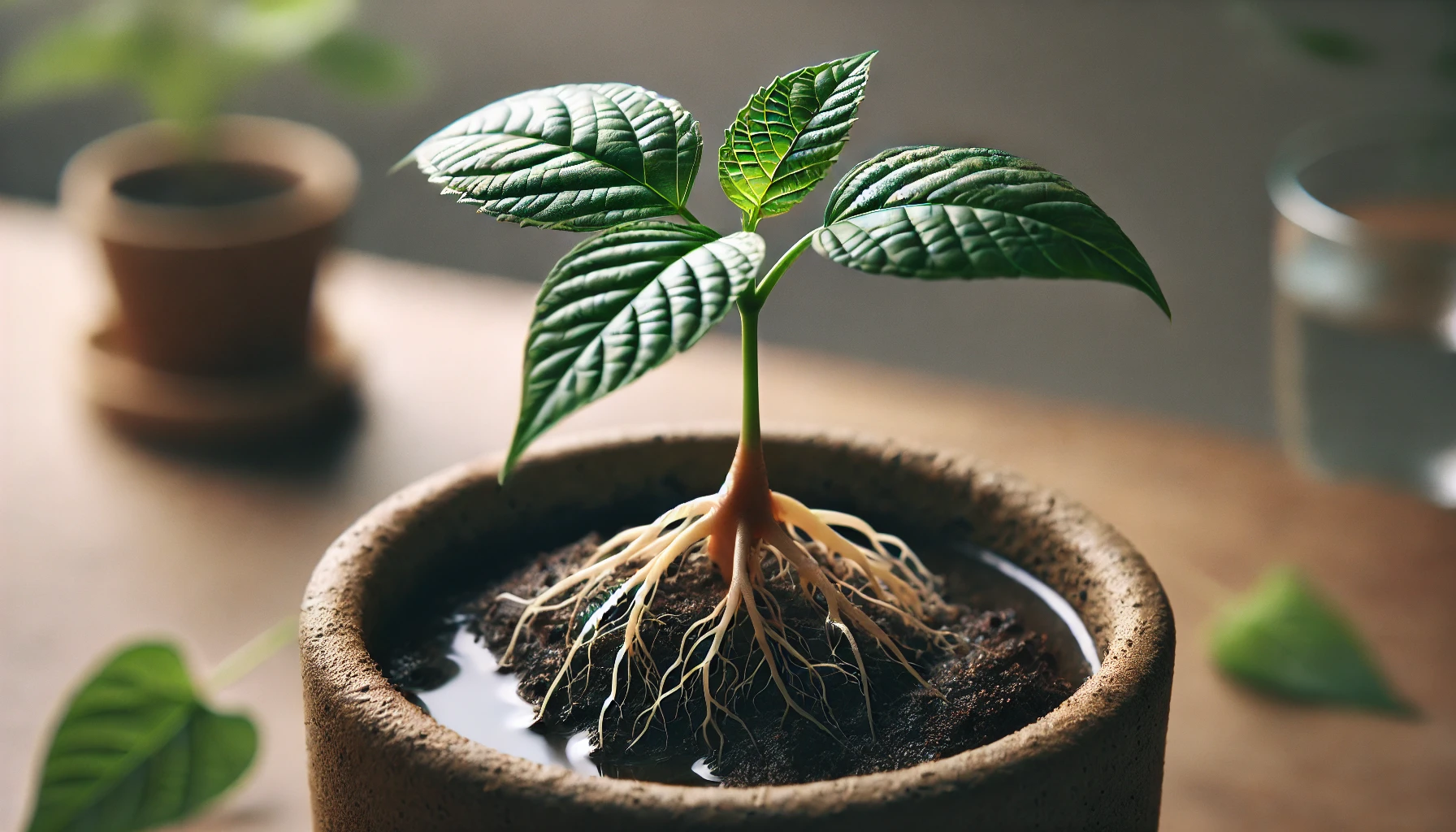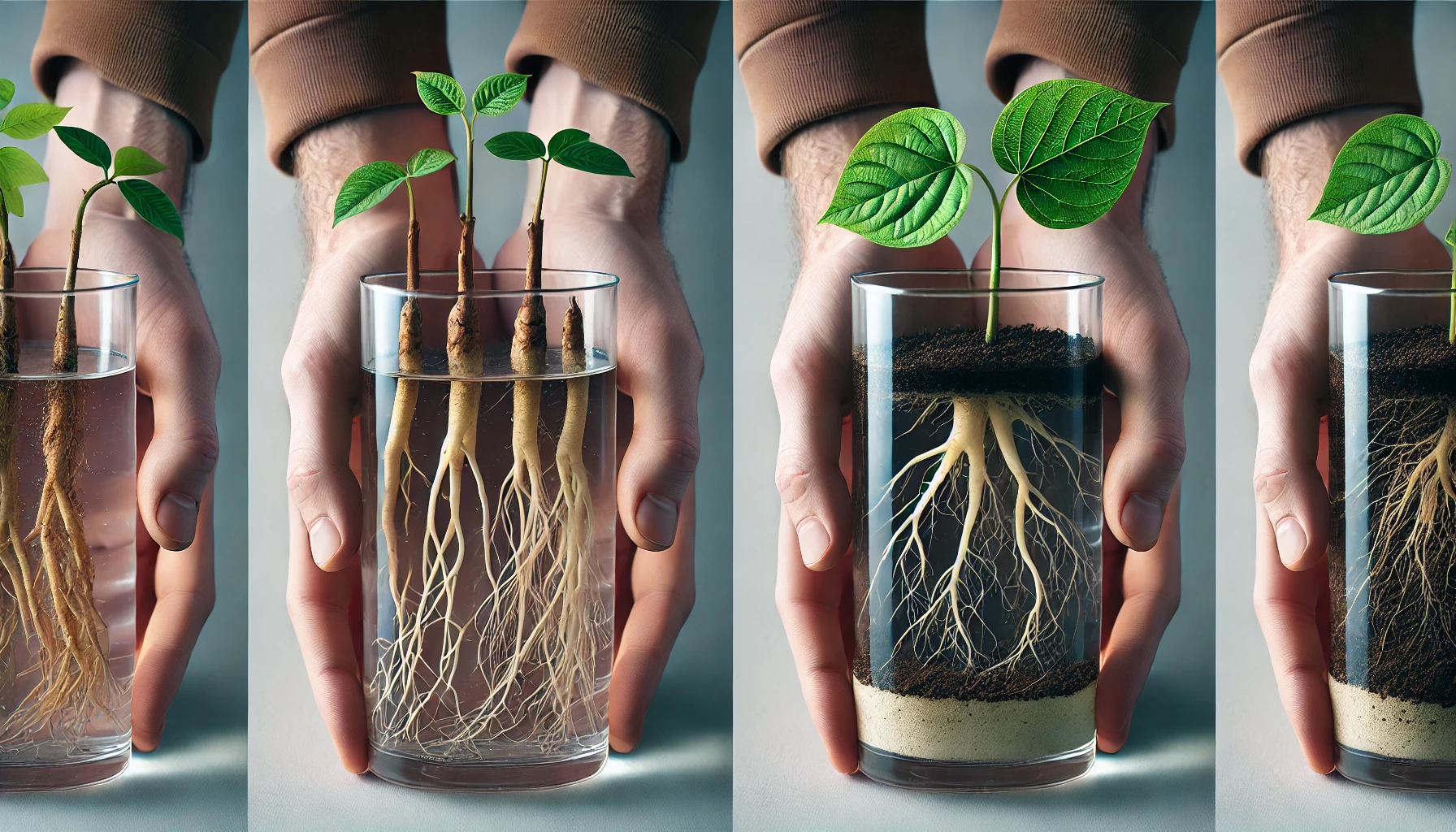
Stem vs. Leaf Cuttings: Differences You Need to Know for Successful Propagation
When it comes to plant propagation, understanding the stem vs. leaf cuttings: differences is essential for success. While both methods are effective ways to grow new plants, choosing the right cutting type can make all the difference in how quickly and healthily your new plant thrives. Whether you’re a seasoned gardener or a beginner, mastering the nuances of stem and leaf cuttings will not only help you grow more plants but also ensure they’re off to the best start. In this article, we’ll break down these two propagation methods, helping you make the best choice for your plants and gardening goals.
Table of Contents
ToggleWhat Are Stem Cuttings?
Stem cuttings are one of the most popular and effective methods of plant propagation. This technique involves taking a small piece of a plant’s stem and encouraging it to grow roots, eventually forming a new plant.
A stem cutting typically includes a healthy section of the plant’s stem, ideally with at least one node—the point where leaves, branches, or roots grow. The cutting is then placed in water or soil, where it starts developing roots and can be nurtured into a full-grown plant.

There are two main types of stem cuttings:
- Hardwood Cuttings: Taken from mature, woody plants, these cuttings are typically taken during the dormant season.
- Softwood Cuttings: Taken from younger, more flexible stems, these are best for propagation during the growing season.
Stem cuttings are favored because they are easy to take, require minimal equipment, and often have a high success rate. With the right care, this method can produce strong, healthy plants.
What Are Leaf Cuttings?
Leaf cuttings are a popular and effective way to propagate plants. This method involves using a healthy leaf or part of a leaf to grow a new plant. Unlike stem cuttings, which rely on nodes to form roots, leaf cuttings use the entire leaf or a portion of it to produce new growth.

There are two main types of leaf cuttings:
- Whole Leaf Cuttings: A whole, mature leaf is taken from the plant, and new roots will develop from the base of the leaf.
- Leaf Petiole Cuttings: Only the leaf stalk (petiole) is used, and new roots form from the base of the petiole.
Leaf cuttings are often used for plants like begonias, African violets, and some succulents. This propagation method is ideal for plants that don’t grow from traditional seeds or need more specific care.
Successful propagation using leaf cuttings requires the right conditions. Providing proper moisture, light, and a sterile environment ensures healthy root development and new plant growth. It’s a straightforward, budget-friendly way to grow new plants, especially for beginners.
Stem vs. Leaf Cuttings: Key Differences
When propagating plants, choosing between stem and leaf cuttings can make a significant difference in success rates. Understanding the key differences can help you decide which method is best for your plant. Here’s a breakdown:

Stem Cuttings
- Best for: Plants with woody or semi-woody stems, like roses, lavender, and coleus.
- How it works: A section of the stem is cut just below a node (where leaves or branches sprout). Roots develop from this node.
- Why it’s effective: Stem cuttings generally root faster because they contain more stored energy, which promotes quicker growth.
- Tip: Make sure the cutting includes at least one node, as this is where the roots will form.
Leaf Cuttings
- Best for: Plants like succulents, begonias, and African violets.
- How it works: A healthy leaf (or a section of the leaf) is cut and placed in water or soil to root.
- Why it’s effective: Leaf cuttings can be slower to root than stem cuttings, but they can still successfully develop roots and grow new plants.
- Tip: Ensure the leaf is intact and healthy—damaged or old leaves won’t propagate well.
Key Differences:
- Rooting Speed: Stem cuttings tend to root faster than leaf cuttings due to the higher energy stored in the stem.
- Success Rate: Stem cuttings generally have a higher success rate, especially for woody plants, while leaf cuttings require more care and attention.
- Plant Type: Some plants root better from leaves, while others are more successful with stem cuttings. Research your plant’s preferences for the best outcome.
Choosing the right cutting type is crucial for successful propagation. Consider the plant species and the method that will give you the best chance of growing strong, healthy plants.
Pros and Cons of Stem Cuttings
Propagating plants through stem cuttings is a popular and effective method, but like any technique, it comes with its advantages and disadvantages. Here’s a quick breakdown of the pros and cons to help you decide if this method is right for you.
Pros of Stem Cuttings
- Easy and Cost-Effective
Stem cuttings are simple to take, and you don’t need expensive tools or equipment. All you need is a healthy plant, a sharp knife or scissors, and a container with water or soil.

- Fast Results
Once rooted, stem cuttings can grow quickly, making this method ideal for gardeners looking for fast propagation. With proper care, you’ll see roots forming within a few weeks. - Clone Your Favorite Plants
Stem cuttings allow you to duplicate the exact characteristics of your parent plant. This means you can replicate unique traits such as flower color or leaf pattern, ensuring consistency across generations. - Less Stress on Parent Plant
Unlike division or seed propagation, taking a stem cutting doesn’t usually harm the parent plant. It allows you to produce more plants without the risk of over-stressing the original.
Cons of Stem Cuttings
- Limited to Certain Plants
Not all plants can be propagated through stem cuttings. Some species require specific conditions or methods, such as root cuttings or grafting, making this approach less universal. - Risk of Disease Spread
If you use contaminated tools or don’t sanitize your cuttings, diseases can be transferred to your new plants. Always ensure your tools are clean to avoid infection. - Requires Proper Care
Stem cuttings need consistent moisture, light, and temperature to thrive. Neglecting these factors can result in slow or failed rooting. - Space and Time Constraints
While stem cuttings root quickly, they require space to grow and develop properly. If you’re propagating many plants, managing space can become challenging.
In conclusion, stem cuttings are a great choice for many gardeners, offering a simple, effective, and low-cost propagation method. Just keep in mind the challenges, and you’ll be well on your way to growing new plants with ease.
Pros and Cons of Leaf Cuttings
Leaf cuttings are a popular and effective propagation method, but like any technique, they come with their advantages and drawbacks. Here’s a breakdown to help you decide if this method is right for you:

Pros of Leaf Cuttings:
- Simple and Cost-Effective
Leaf cuttings are an easy and budget-friendly way to propagate plants. You don’t need specialized equipment, just a healthy leaf and some patience. - Works for Many Plant Varieties
Leaf cuttings are suitable for many popular houseplants like begonias, African violets, and succulents. They allow you to quickly grow new plants from existing ones. - Minimal Maintenance
Once the cutting is placed in soil or water, it requires minimal attention, making it a low-maintenance method for busy gardeners. - High Success Rate
When done correctly, leaf cuttings have a high success rate, especially for plants that readily propagate through this method, providing quick results.
Cons of Leaf Cuttings:
- Slower Growth
Compared to stem or root cuttings, leaf cuttings often take longer to root and grow. It can require more patience before you see substantial progress. - Not Suitable for All Plants
Not all plants can be propagated by leaf cuttings. Some, like those with woody stems, may not root successfully through this method. - Limited Rooting Potential
Sometimes, leaf cuttings may only produce small root systems, resulting in weaker plants. Transplanting them too early can stunt their growth. - Vulnerable to Rot
Leaf cuttings are more prone to rot, especially if the conditions are too damp or the cutting isn’t kept clean. It’s crucial to monitor them closely for signs of decay.
When to Choose Stem Cuttings vs. Leaf Cuttings
Choosing the right type of cutting is crucial for successful propagation. Both stem cuttings and leaf cuttings have their benefits, depending on the plant and the desired results. Here’s a breakdown to help you decide which approach is best for your propagation project:
Stem Cuttings: Best for Fast Rooting and Growth
Stem cuttings are the go-to method for many plants, especially woody and semi-woody species. This method encourages faster root development because the stem contains the necessary growth hormones.
- Ideal for: Herbs, houseplants (like pothos, snake plants), shrubs, and woody plants.
- Best when: You want quicker results or need to propagate a plant with a more established structure.
- How to propagate: Cut a healthy, non-flowering stem with a few leaves attached. Make sure the cutting includes at least one node (the point where leaves grow). Place the cutting in water or directly into soil.
Leaf Cuttings: Perfect for Leafy or Succulent Plants
Leaf cuttings are great for plants that are slower to root from stem cuttings. This method works well for plants with large, fleshy leaves or succulents that store energy in their leaves.
- Ideal for: Succulents (like jade plants, African violets), and some houseplants with thick leaves.
- Best when: You need to propagate a plant with limited stem growth or you’re working with a plant that roots better from a leaf.
- How to propagate: Select a healthy leaf and cut it from the plant. In some cases, you may need to cut the leaf into sections (like with begonias). Place the leaf or sections in a soil mix and keep it moist until roots form.
Key Differences to Keep in Mind:
- Stem cuttings generally root faster and are often more reliable.
- Leaf cuttings are ideal for plants that store energy in their leaves and require a slower rooting process.
By choosing the right cutting method, you can speed up the propagation process and increase your chances of success. Whether you opt for stem or leaf cuttings depends on the plant’s characteristics and how quickly you need the new growth.

Conclusion
In conclusion, understanding the stem vs. leaf cuttings: differences is key to mastering plant propagation and successfully growing new plants. While both methods have their benefits, choosing the right one depends on the type of plant you’re propagating, the time you have available, and your gardening goals. Stem cuttings are ideal for fast-growing plants that need a quick start, while leaf cuttings can be a more accessible option for beginners or when you have limited resources.
Ultimately, both methods can lead to thriving plants when done correctly. Whether you’re experimenting with stem cuttings for more immediate growth or taking the time to propagate from leaves, the most important thing is to stay patient and attentive. So, gather your supplies, choose your method, and enjoy the rewarding process of growing new plants from cuttings! Happy propagating!
Frequently Asked Questions(FAQ)
What is the main difference between stem and leaf cuttings?
The main difference between stem vs. leaf cuttings: differences lies in the part of the plant you use for propagation. Stem cuttings involve cutting a portion of the stem, usually including a node, where roots can develop. In contrast, leaf cuttings involve taking a healthy leaf (sometimes with a piece of the petiole or stem) to grow a new plant.
Which method is better for faster propagation, stem or leaf cuttings?
Stem cuttings generally root and grow faster than leaf cuttings, making them the preferred choice for quicker propagation. This is because stem cuttings contain more growth hormones and, in many cases, are closer to the plant’s root system, encouraging faster root development.
Can I propagate all plants with either stem or leaf cuttings?
Not all plants can be propagated using both methods. Some plants, like African violets and begonias, thrive with leaf cuttings, while others, like roses or pothos, propagate better with stem cuttings. It’s important to research the best method for each plant type.
Do stem or leaf cuttings require different care once planted?
Yes, both stem and leaf cuttings have different care needs. Stem cuttings often require more humidity and consistent moisture to establish roots. Leaf cuttings, on the other hand, may need slightly more time and patience, but once rooted, they often require similar care in terms of water, light, and soil.
How can I improve my success rate with stem or leaf cuttings?
To increase your success with both types of cuttings, ensure that you:
- Use clean, sharp tools to prevent infection.
- Provide the right environment: warm, humid, and indirect light.
- Keep the cuttings in moist soil or water and be patient.
Avoid overwatering, which can lead to rot.
Can I propagate succulents using both stem and leaf cuttings?
Yes, many succulents can be propagated using both stem and leaf cuttings, but leaf cuttings are more commonly used for species like Echeveria and jade plants. Stem cuttings are generally faster for succulent propagation, but both methods can yield good results with the right care.
Are there any plants that can only be propagated using one type of cutting?
Yes, some plants, like certain types of ferns or begonia species, may only propagate well from leaf cuttings, while others, like roses or certain woody plants, require stem cuttings. It’s always a good idea to check the propagation method recommended for your specific plant.
